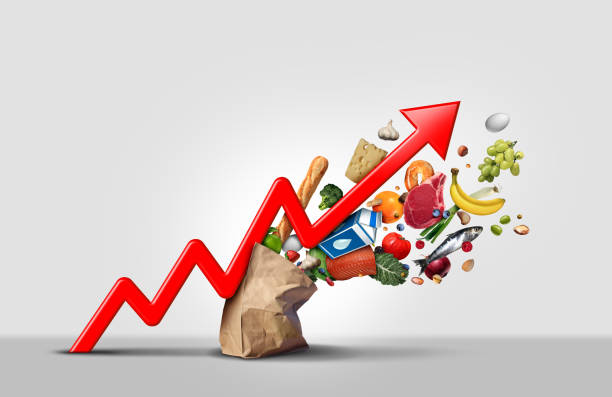Inflation has been all over the news for the last couple of years. The amount of money printed during the pandemic and ongoing supply chain issues increased prices across the board.
In Canada, the Consumer Price Index rose to 6.8 % in 2022, compared to 2.4% in 2021. It’s anticipated inflation will be around 3.1% for 2023, largely due to massive hikes in interest rates.
What is the Consumer Price Index?
The Consumer Price Index (CPI) represents changes in prices as experienced by consumers. It measures price change by comparing, through time, the cost of a fixed basket of goods and services.
In Canada, the goods and services in the CPI basket are divided into 8 major components: food; shelter; household operations, furnishings and equipment; clothing; transportation; health and personal care; recreation, education and reading, and alcoholic beverages, tobacco products and recreational cannabis.
However, inflation impacts people differently. Your household expenses likely won’t perfectly match the average Canadian’s, and depend on factors like the people in your household, your age and where you live.
That’s where the personal inflation rate comes in.
What is a Personal Rate of Inflation?
Unlike the overall rate of inflation which calculates the national average changes in the cost of all items, your personal rate of inflation is representative of your exact spending patterns.
This means lifestyle factors such as choice of transport, brands, eating and drinking habits all play into what your personal rate of inflation looks like. Essentially, your personal rate of inflation represents how your personal cost of living is rising, irrespective of the national average figure.
Generally, if you spend relatively more on items with low price rises, you will have a lower personal rate of inflation than the national average rate, and if you spend relatively more on items with large price rises, you will have a higher personal rate of inflation than the national average rate.
How is It Calculated?
In order to calculate your personal inflation rate, you’ll need to track your spending.
For an overall personal inflation rate, subtract your total monthly spending from a year ago from your current monthly spending. Then divide that sum by your monthly spending from a year ago.
You can use your yearly spending instead; same formula as above.
You can also look specific categories such as housing and food.
My Personal Rate of Inflation
This year, my personal inflation rate is at 10%! A far cry from the national average.
There are several factors that contributed to this high number:
- Living in Metro Vancouver: Vancouver is the most expensive city in Canada. We pay more for everything here, from gas to groceries, rent and daycare.
- Being single: I previously wrote about the fact everything costs more when you’re single.
- Interest rate hikes: being a homeowner with a variable mortgage greatly impacted my finances.
Unsurprisingly, the biggest increase was on my housing costs. My mortgage payment increased by 50%! My property tax by 28%, my home insurance by 10% and my strata fees by 8%. In total, I have to fork an extra $ 650 per month on my home. That’s $ 7 800.00 a year!
Luckily, my current salary can cover this large increase. Still, it’s money I don’t have available for something else.

hey
cool blog 🙂 will give it a follow and a like !
https://ketodietrecipes.co.uk/
LikeLike
hey
lovely blog hope all is well
happy blogging.
https://ketodietrecipes.co.uk/
LikeLike